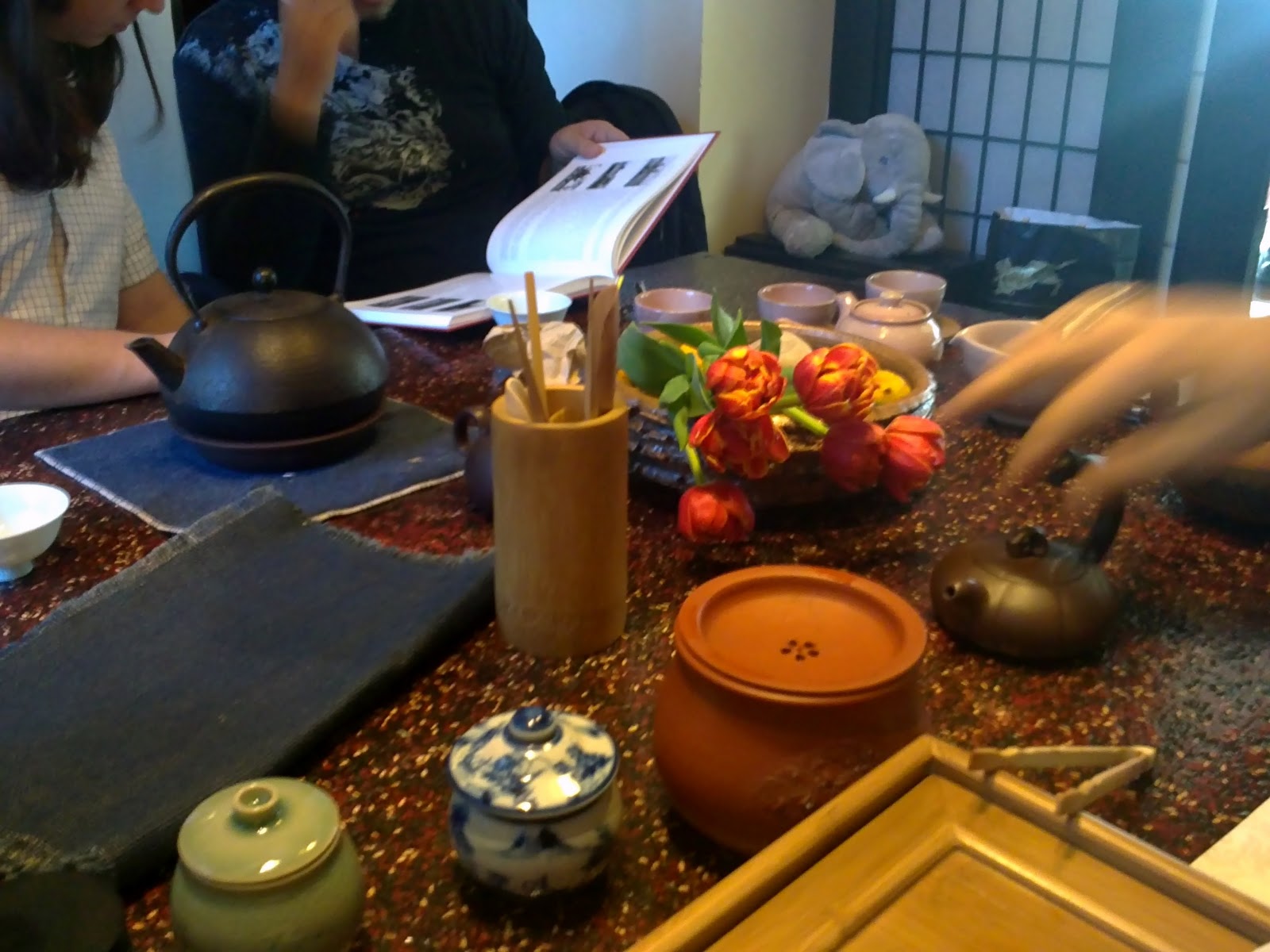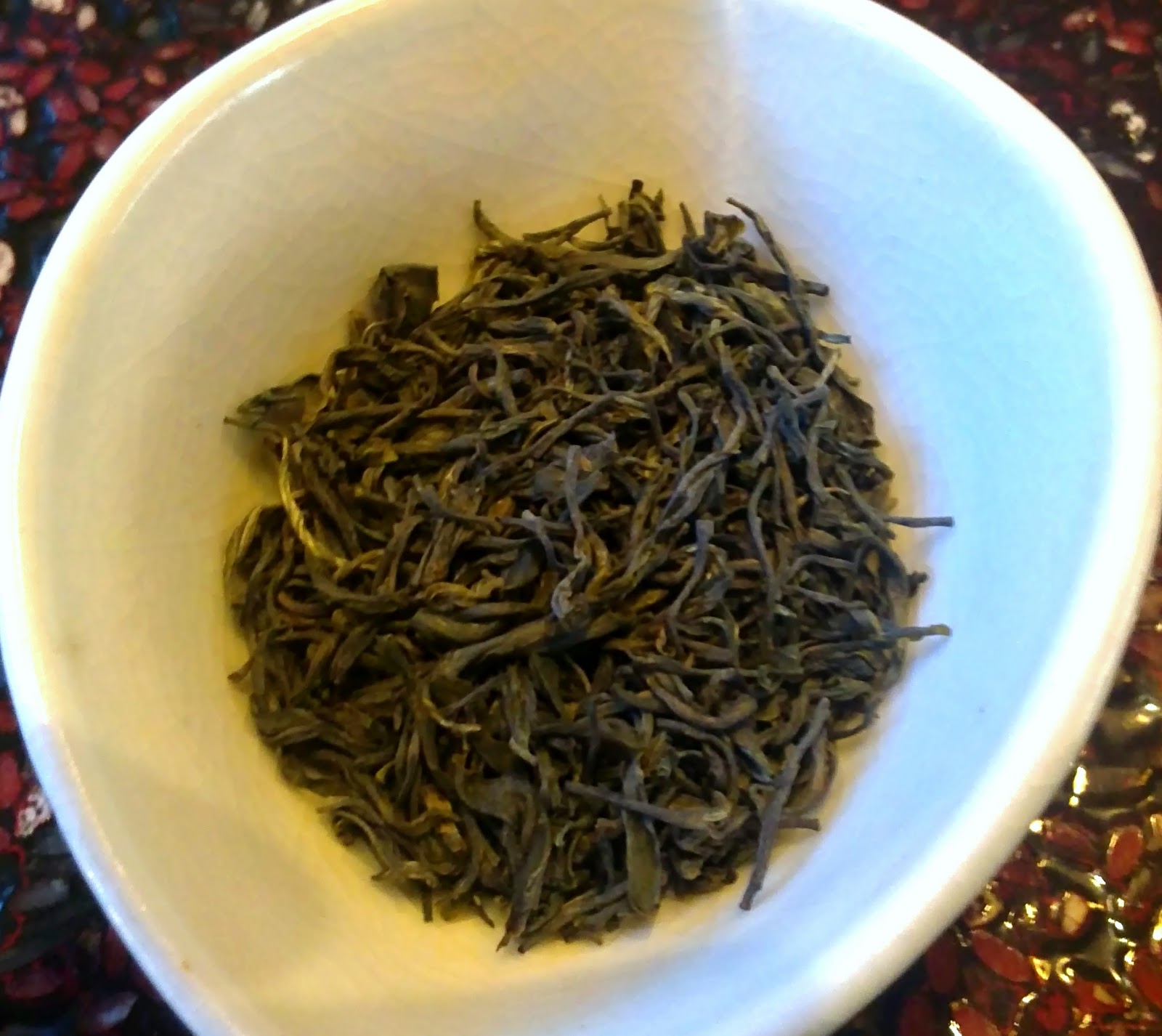Home-made tea
Home-made tea: comparing yellow tea hand-kneaded at home with the real thing. Surprising!
Home-made tea: comparing yellow tea hand-kneaded at home with the real thing. Surprising!
Three Korean teas on the tea table – more than I normally sample in a year.
 |
| Tea sessions at restaurants are always messy… |
 |
| Nice leaves to this green sejak from Korea. |
 |
| This terrible mobile phone photo is the only one I managed to take of the Jiri-san Balhyocha. |
 |
| We also had a look at some tea items, including this antique yixing pot: so dirty inside it’s no more good for actual brewing. |
What is yellow tea? Not so obvious, apparently.